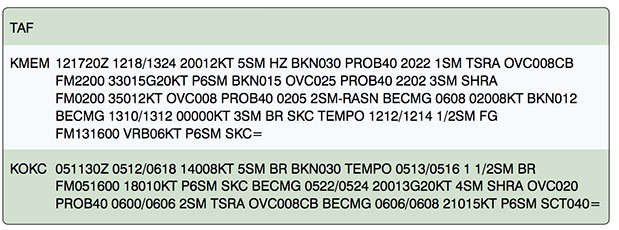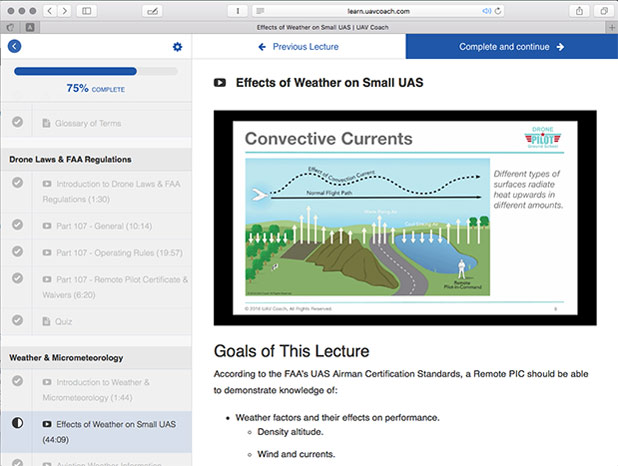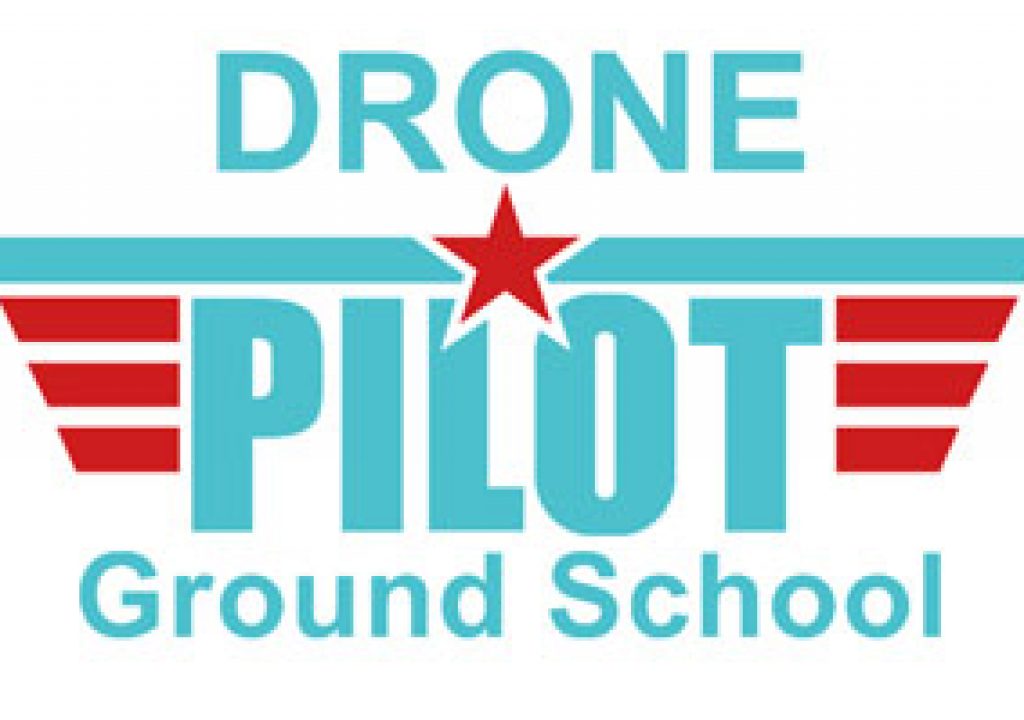It’s very simple: If you want to fly an unmmanned aircraft commercially in the United States (ie, to be paid for your services, rather than flying as a hobbyist), you have to be licensed by the Federal Aviation Administration, the FAA.
And the biggest part of becoming licensed is taking an FAA test called the Part 107 Aeronautical Knowledge Test, which is a 60-question, randomly-generated, multiple-choice exam that covers a wide range of topics, including weather behavior, weather communications, drone operations, radio communications, FAA airspace classes, airport proceedures, and map reading. You have to pay in the neighborhood of $150-$170 to take the test at an FAA-affiliate (there are hundreds around the country), and if you don’t score at least 70%, you’ll have to wait at least 14 days and pay all over again for a re-do.
Let me tell you: it’s not an easy test, by far. For instance:
- Do you know the difference between advection fog and radiation fog?
- What’s the most dangerous kind of thunderstorm?
- How do you monitor air traffic at any given airport without a tower?
- Can you read a aeronautical map (a “sectional” map) and determine what kind of military flight routes exist in an area, and what altitudes they fly?
- Do you know the minimum height you can fly over a federal wildlife preserve?
- You probably know you shouldn’t fly within a certain distance of an airport (I really hope you know that!), but is that always true? If not, how so?
- You might also know that you’re not supposed to fly higher than 400 feet, but do you know when it’s perfectly fine to do so?
- And if you do fly over 400 feet, what airspace classification will you be in: A, B, C, D, E or G?
- How do you know if the airspace you’re flying in is subject to any temporary restrictions or other time-critical information?
- What information would you need to calculate the height (or ceiling) of clouds in a given area?
- If the pilots of an airplane and a glider are on a collision course, what actions should they take?
- And my personal favorite: can you read this TAF weather forecast below, and figure out what the weather in Memphis will be doing at different altitudes and times between the 12th and 13th day of the month?

Of course, you’re probably thinking, “What does all of that have to do with flying a drone??” And the answer is: in some cases, not too much. Except… by testing a broader range of aeronautical knowledge, the FAA is looking to integrate drone pilots into the overall family of professional aviators, who are trained to take a thorough, systematic approach to safety, and who have a deep understanding of the U.S.’s highly regulated airspace. In other words: the test helps separate professionals from dabblers, and leads to safer skies. So just keep that big, noble goal in mind as you’re quietly cursing the FAA for expecting you to know what direction an airplane is going when it’s left downwind from runway 27 at an airport!
At any rate, I couldn’t answer most of these questions (and many more) when I started preparing for the Aeronautical Knowledge Test, but two weeks later, I had passed the test with a respectable 92% score. And I did that by taking the online Drone Pilot Ground School course ($300), which is the best way I know to prepare quickly and efficiently, and to minimize the expensive prospect of failing.

The online course works through any web browser. I completed some of it on a Mac and some on an iPad.
The course has a lot going for it:
- It’s taught by Alan Perlman, an FAA-certified drone pilot, journalist and instructor, and was put together with the help of an FAA-certified Flight Instructor. Alan does a good job in delivering the course’s content in easy, down-to-earth terms, and focusing on the underlying concepts, not just teaching to the test.
- The course material is delivered in two different ways: there’s a video lecture for each chapter (there are about 15 main chapters of content within 4 sections), or you can peruse the lecture’s text and images as well. I really appreciated this twin path approach because I would eventually tire from either watching video or reading text, and being able to switch gears let me keep going longer without getting exhausted.
- Beyond the clear lectures, the course really shines thanks to all the quizzes and practice tests it offers, with multiple choice questions very closely inspired by questions you’ll find on the actual exam. Each of the course’s 15 core chapters ends with a short quiz of about a dozen questions, and then each of the four sections wraps up with a longer quiz of about 25 questions. All of these quizzes give you a good idea of how you’re absorbing each chapter, but once you finish going through all of the material, you have five full-length, 60-question practice exams available to you as well. Each one is randomly generated from a library of over 300 FAA-inspired questions, and you have to complete them in the same two hour window that the FAA imposes. I found these 5 tests incredibly helpful, and took a test each day leading up to my scheduled exam. Going through all five gave me lot of confidence for the real thing.
- Once you’re enrolled, Alan encourages students to get in touch with any questions by phone or email. I emailed Alan with questions on at least a couple of occasions, and he replied quickly and clearly.
- The course is available to students for 5 years, which is very useful because the FAA requires commercial pilots to take the test every two years. That means you’ll have the same great tool available to you when you have to take the test again.
A sample from one of 5 practice exams that make Drone Pilot Ground School unique.
I took about 20 hours to go through the course, spreading it over 8 days. It would have been hard to do it much faster, since much of the material is pretty dense (especially the chapters on weather, airspace and airport operations). After that, I spent another 5 days taking a practice exam every morning, and brushing up on everything I missed.
If you don’t have formal aeronautical training, then the vast majority of the FAA’s Aeronautical Knowledge test will probably be unfamiliar territory to you. That’s why I would definitely recommend taking the Drone Pilot Ground School. Its $300 price tag may give some pause, but it saved me a lot of time trying to dig through FAA handbooks, and sent me into the test with a high level of preparation.


